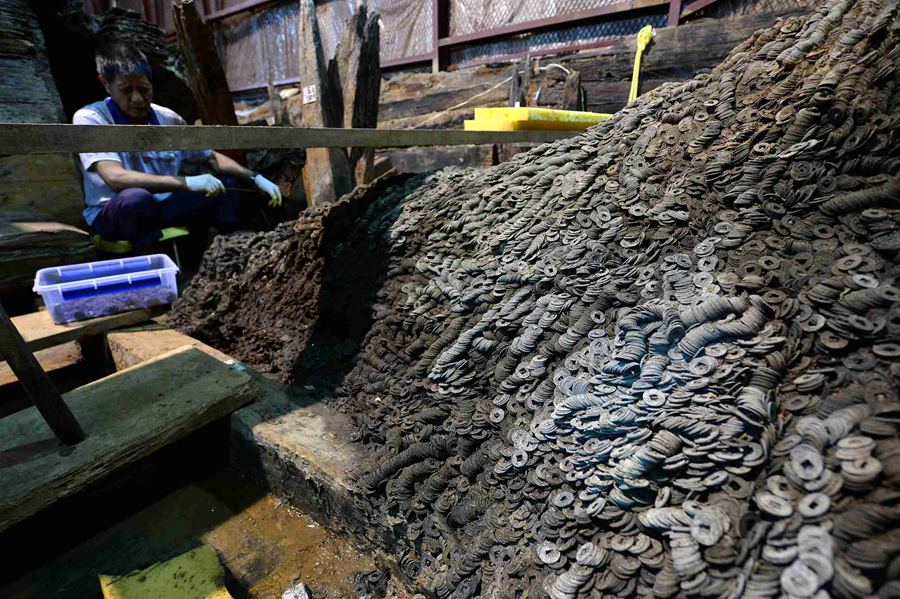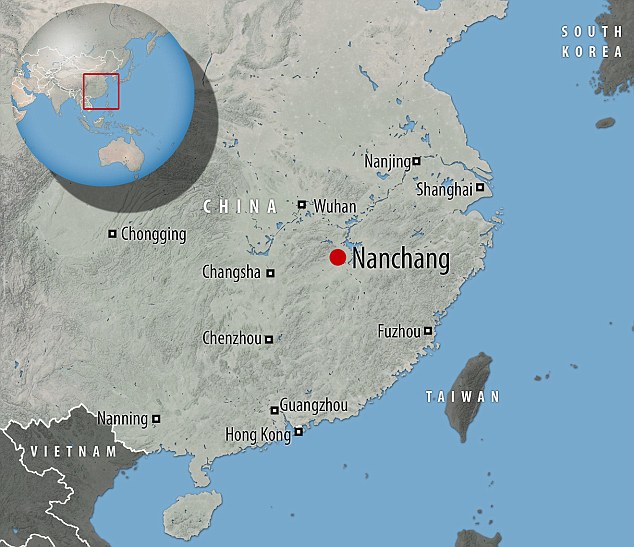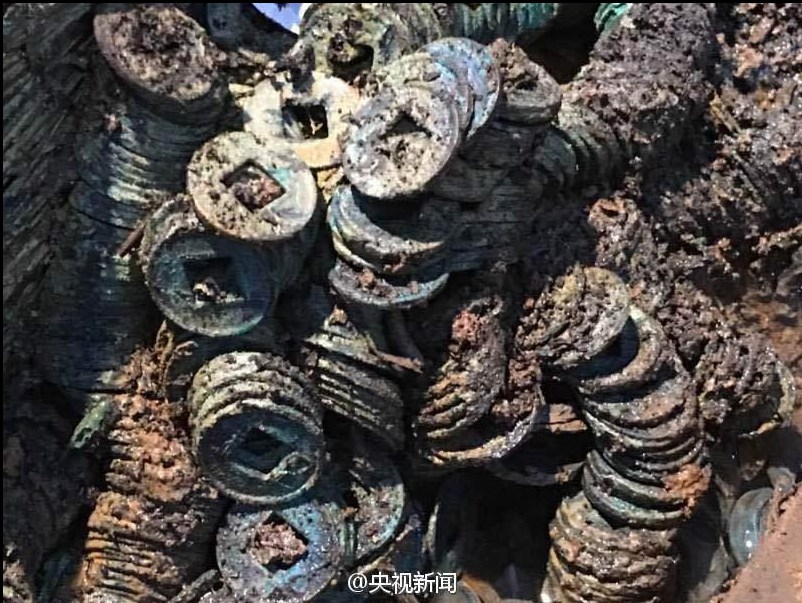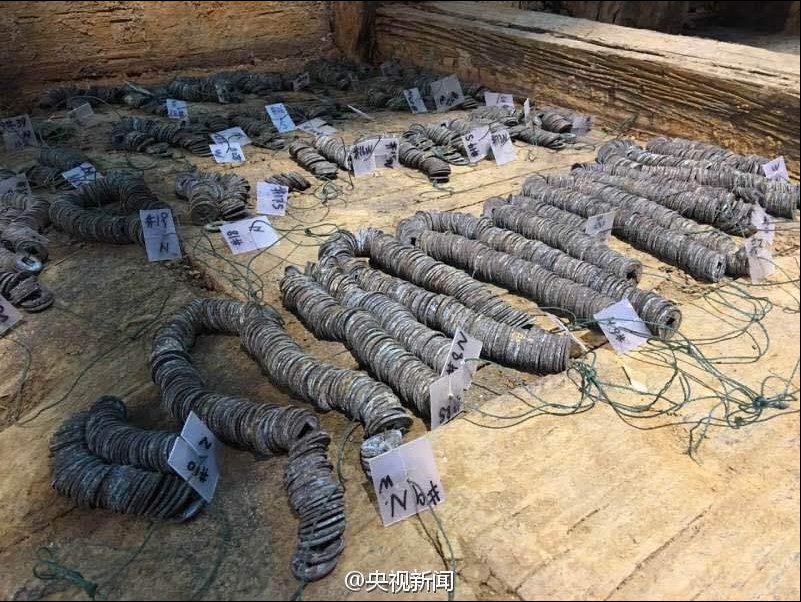Archaeologists have unearthed more than two million copper coins from an ancient tomb complex in China’s Xinjian district.
The 2,000-year-old money, which bears Chinese symbols and characters and a square hole in the center, was found at an excavation site in the city of Nanchang.
The value of the coins is said to be around £104,000 ($157,340) and experts believe the main tomb is that of Liu He, grandson of Emperor Wu, the greatest ruler of the Han dynasty.

The dynasty ruled between 206 BC. C. and 25 d. c.
Experts hope the discovery, which also includes another 10,000 gold, bronze and iron objects, bells, bamboo strips and tomb figurines, can now shed more light on the lives of the nobility in ancient times.
The discovery occurs after a five-year excavation process at the site, which houses eight tombs and a chariot burial site.
It covers 40,000 square meters (430,550 square feet) with walls stretching for almost 900 meters (9,690 feet) and experts believe Liu’s wife is buried in one of the tombs, RT reported.
Xin Lixiang of the National Museum of China said the next step is to search the tomb for items that give a clearer idea of the occupant.
“There may be a royal seal and jade robes that suggest the status and identity of the tomb’s occupant,” she said.
The Chinese began using coins as currency around 1200 BC. C., where instead of exchanging small agricultural implements and knives, they melted them into small round objects and then converted them back into knives and agricultural implements when necessary.
It meant that the first coins were known as “knife money” or “tool money” and, as people became more dependent on them for trade, they were replaced by copper coins which were of very low value and often They had holes in the middle.
The hole allowed coins to be strung to create larger denominations; Usually, around 1,000 coins on a single string were worth one tael of pure silver.



At face value, they would be valued at around £104,060 ($157,340), but due to their age and history they are believed to be worth much more.
In fact, a single coin can sell for thousands of pounds, although at that time copper coins had a very low value. The Western Han were considered the first unified and powerful empire in Chinese history.
While there are many theories behind the fall of the Western Han dynasty, recent research suggests that human interaction with the environment played a central role in its demise.
A census carried out by China in the year 2 AD. C. suggests that the area affected by the enormous flood of 14 to 17 AD. C. was very densely populated, with an average of 122 people per square kilometer, or approximately 9.5 million people living directly in the path of the flood.
Around the 20th and 21st d. BCE, the devastated region had become the center of a rebellion that would end the Western Han dynasty’s five-century reign of power.
Along with the tons of coins found, bells, bamboo strips, and tomb figurines were also found, all of which accompanied deceased nobles of the past when they were buried underground.
The discovered items promise to help fill in more gaps as historians try to complete the puzzle of ancient Chinese burial customs.


